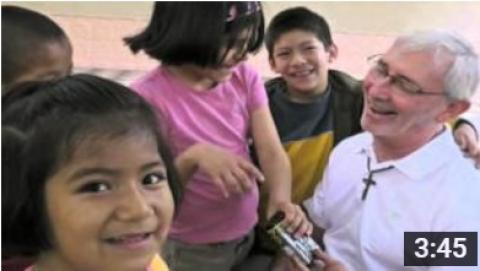
The commitment to ‘leave no one behind’ has been a key feature of all the discussions on the the Sustainable Development Goals at the United Nations. This commitment includes ending the HIV/AIDS epidemic by 2030. One key factor in meeting this goal is funding. The following article was published in the May-June 2016 issue of NewsNotes.
Although it may seem to many that the HIV/AIDS epidemic has receded into the background, its effects continue to take a toll on people’s lives, including those of children and adolescents. In preparation for an upcoming high-level meeting on ending AIDS at the United Nations in June, civil society organizations convened a hearing on April 6 where people living with HIV/AIDS spoked about their life experiences and civil society representatives engaged in fighting the AIDS epidemic shared their concerns with representatives of the member states.
“You bring with you a wealth of experience from your daily work, and for many of you, personal insights from dealing with the disease in your own lives,” Mogens Lykketoft, Danish politician and president of the UN General Assembly, said in opening remarks. “No matter what field we are discussing, sharing such experience and listening to insights like yours, is fundamental to understanding what our priorities should be and how we can respond most effectively.”
Jürg Lauber, permanent representative of Switzerland to the United Nations and co-facilitator of the upcoming high-level meeting on ending AIDS, shared how vividly he remembers the fear, stigma, and suffering endured by his colleagues and friends living with, at risk of, and affected by HIV/AIDS. “Like so many of you in this hall I see as a great responsibility the need to make sure we do not miss the historic opportunity to deliver on the ambitious commitments of the Sustainable Development Goals (SDGs), that is, to defeat the AIDS epidemic by 2030.” However it is clear that this ambitious goal cannot be reached without sufficient funding.
The speakers at the hearing emphasized the need to increase investment in HIV/AIDS response or risk a rise in HIV infections. Funding from national and international donors as well as governments could curtail the epidemic before its resurgence. People living with HIV need medicines, and safety from violence and stigma that create barriers that prevent them from reaching the services they need. Planning and implementation must include people living with and at risk of HIV/AIDS, their communities, and family members living with and caring for them.
The speakers at the hearing frequently repeated the phrases “Leave no one behind” and “Nothing for us without us” to express the need for inclusion, not only in the response to the epidemic but also in the formation of laws and policies that affect people living with HIV/AIDS. “We are not passive recipients waiting for a handout; we are citizens contributing to the economy of our countries who deserve respect,” one speaker said. They went on to demand change and innovation in addressing the epidemic as well as a change in attitudes towards those living with HIV/AIDS. “Business as usual is not an option. We need innovation, not only in scientific research but also in the delivery of services,” another speaker said.
At the end of the hearing, the president of the General Assembly summarized the following salient points: 1) that the hearing affirmed the world’s potential to end the AIDS epidemic by 2030 as underscored in the SDGs; 2) that in order to reach our destination we need continued commitment and accelerated action by all; 3) the need to focus on protecting future generations from acquiring HIV; 4) on halting the spread of HIV/AIDS in vulnerable communities, especially for women and girls; 5) on tackling income inequality; and on creating platforms for mutual accountability. He also said that ending the AIDS epidemic requires that no one is left behind.
At the high-level meeting in June, member states are expected to craft a declaration and set out ambitious targets for treatment and prevention of HIV/AIDS, as well as the protection of human rights of those living with, at risk of, and affected by HIV/AIDS.
Maryknoll missioners in Asia, Africa, and Latin America continue the invaluable work of providing treatment and care to people living with HIV/AIDS. More funding would enable their projects to meet not only the health needs of their clients but also deeper spiritual needs. The missioners are Christ’s hands that bring healing and compassion to the afflicted, especially to those abandoned by family and friends because of their HIV status.
Despite facing a gargantuan problem with little funding, advances in medicine enable missioners to now see children born with HIV/AIDS live into adulthood and help HIV positive mothers give birth to children who are free of AIDS. We are hopeful that the high-level meeting in June will define concrete actions to end AIDS and that we can work together to make it happen.
Photo: Watch a 4 minute video about Maryknoll Father Joseph Fedora helping people with HIV/AIDS, including about three-dozen HIV-positive children living in a shelter in Lima, Peru.
